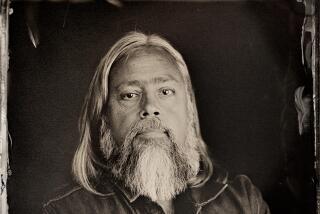Pass the Turkey . . . and the Medicine, the Laws, the Spirituality : Americana: The Indians’ contributions to our life style go far beyond the traditional foods we enjoy today.
- Share via
Edward Winslow, one of the Pilgrim fathers and eventual governor of Plymouth Colony, wrote to a friend in England in 1621 that “ . . . after we had gathered the fruits of our labor . . . many of the Indians (were) amongst us, whom for three days we entertained and feasted.”
Most Americans know that the native people had a role in the first Thanksgiving, but they are usually portrayed in the background, just part of the scenery, a nameless supporting cast for the Pilgrim settlers. Few Americans have ever heard of the Narragansett and Pequot nations, or Squanto and Massasoit, even though they all played significant roles in the survival of the English colonists and the birth of American identity. What they contributed was far more important than the corn, beans and squash that sustained the colony in its first critical years. The contribution of the native people surpassed the scope of the American land itself that was begged, borrowed and stolen “from sea to shining sea.”
There are basically two kinds of contributions that Indian people have made to the development, material and intellectual, of the American nation. Their contributions to the physical development of America are abundant and in evidence even to this day. The Thanksgiving holiday menu, of course, is a plethora of native foods--turkey, corn, cranberries, pumpkins, green beans, potatoes. Indian people grew more than 300 varieties of food crops, and it is estimated that two-thirds of the American diet today is composed of foods first harvested from native American gardens. Even our cola drinks, now universally popular, were inspired by Indian ingredients and recipes, and were marketed successfully in the early years by references to their restorative properties attributed to the Indian experience.
Indian people also made important contributions in the field of medicine. Malaria was finally conquered with quinine, from the pharmacopeia of the Quechan Indians of Peru. Treatments for scurvy, amoebic dysentery and constipation, and the use of iodine and topical anesthetics, were first suggested by native medicine people, although European scientists have received all the credit. Even illicit drugs like peyote, cocaine and a kaleidoscope of hallucinogenics were already in ancient use (with little misuse) when a confused Columbus bumped into the Caribes in 1492. There is no evidence that the alleged mind-expanding properties of native drugs had an effect on Indian wisdom, although Europeans found much in that, too, to borrow for their own use.
Intellectual advancements in the fields of anthropology, biology, botany, history, philosophy, religious studies and sociology owe great and unrecognized debts to studies first conducted among the Indian nations of the Americas. Both the French and American revolutions were advanced in part because colonists had seen, in Indian forms of government, how the democratic structure functioned when people elected leaders who debated issues in public forums. But scholars here and abroad still resist the conclusion that the Iroquois Great Law of Peace somehow contributed to the U.S. Constitution, the Bill of Rights, the bicameral legislature and separation of powers.
In addition to tangible evidence of native thought, there is the intangible, metaphysical world where Indian ideas continue to have impact.
Throughout the history of Indian/European contact there was a symbiotic exchange of religious ideas, but it is from the Europeans exclusively that we must depend for the records of the exchange. The first recorded evidence of Indian spiritual manifestations was in 1634, when a group of Ursuline nuns in Loudon, France, were reportedly possessed by a number of spirits, including one who spoke in a “Red Indian language.”
Certain romantic writers and poets of Europe were inspired in part by somewhat confused notions of Indian spirituality. American transcendentalists sometimes even tried to live like Indians in order to duplicate, and therefore document, the importance of the native American worldview. No less than Friedrich Engels wrote in 1879 that the Communist Manifesto “would have been far different” had he and Karl Marx known then what they later learned about Indian forms of government.
The more recent Indian contributions to American and European forms of thought are easier to document. So-called New Age religions depend heavily on an infusion of native American ideas of spirituality and ceremony, and they may indeed serve as its principal source of wisdom. The European Green Party uses as its political manifesto an 1851 speech by Chief Sealth from the Suquamish nation in present Washington state. American environmentalists are more reluctant to credit Indian environmental thought, although native ideas concerning land management and the use of natural resources are slowly gaining credence. Evolutionists and animal-rights organizations are only now recognizing something that Indian people had long ago mythologized--that the animal and plant worlds share the same Earth Mother and Sun Father and are therefore siblings to the human animal.
So, this Thanksgiving, as you sit down to enjoy Brother Turkey and Sister Pumpkin, remember to invite the spirit of the Indian who long ago faded into the forest of history. After all, the first Thanksgiving was offered not just in gratitude to God, but also to the land’s first people, the real hosts of the Pilgrims’ party.
More to Read
Sign up for Essential California
The most important California stories and recommendations in your inbox every morning.
You may occasionally receive promotional content from the Los Angeles Times.













